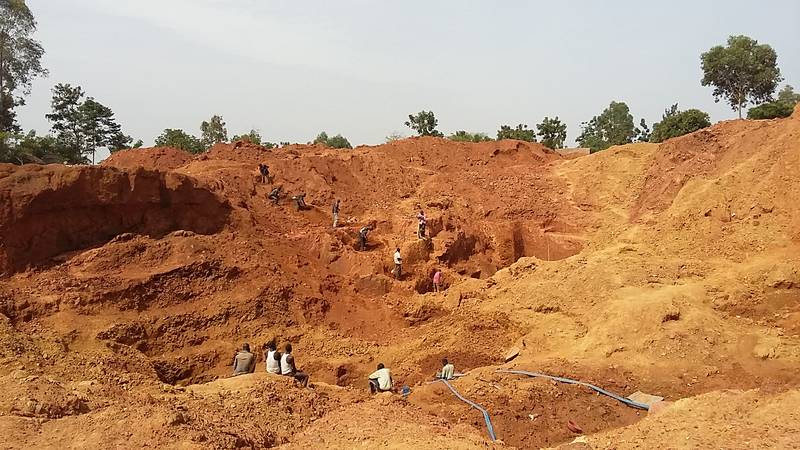Gold prospecting on open pit near Amonikakinei, Tiira, Busia, Uganda
People in background are trying to reach the rich gold pockets at bottom of this open pit. Our people and team at front is verifying the overburden soil for existence and presence of gold. Sadly, few particles of fine gold do not justify the gravitational operation.
Definitions:
Open Pit: A surface mine from which minerals, precious metals or rock are extracted. The open pit is created by removing layers of soil and rock above the desired material. In this context, it refers to a gold mining operation where people in background work towards reaching ‘rich gold pockets’ at its bottom.
Overburden Soil: This term describes the layer or layers of non-valuable rock or soil that lie over an area of interest such as ore deposits, mineralization, water sources etc., which needs to be removed in order to access these resources. In this text, ‘overburden soil’ is what people at front are verifying for gold existence and presence.
Gold Pockets: This phrase likely refers to concentrated deposits or areas within the mine where there’s a higher likelihood of finding significant amounts of gold - referred to as ‘rich’.
Fine Gold Particles: These are tiny pieces or flakes of gold that can be present in ore but they may not always justify large scale mining operations due to their small quantity and difficult extraction. In this context, it’s stated sadly a few particles do not make the gravitational operation worthwhile.
Gravitational Operation: This is likely referring to gold panning, sluice recovery or similar gravity separation techniques used in mineral processing where water is added with ore into sluice boxes and shaken. The heavier minerals, like gold, settle at the bottom due to gravitational force while lighter materials wash away. It’s mentioned here that these few fine particles of gold do not justify this type of operation in terms of efficiency or profitability.
